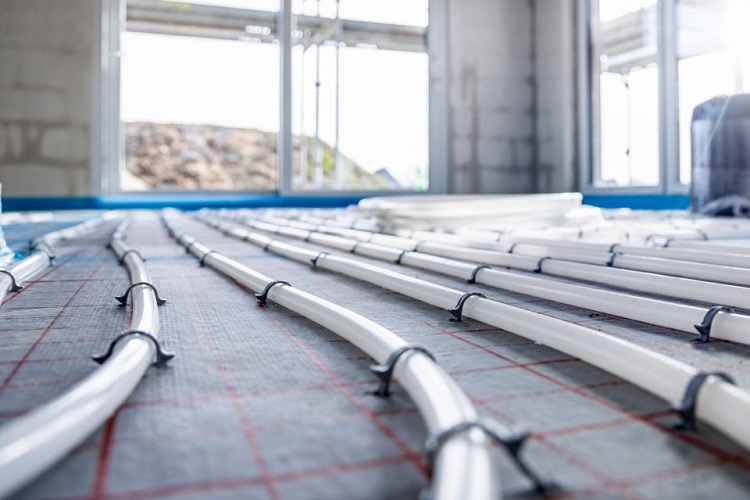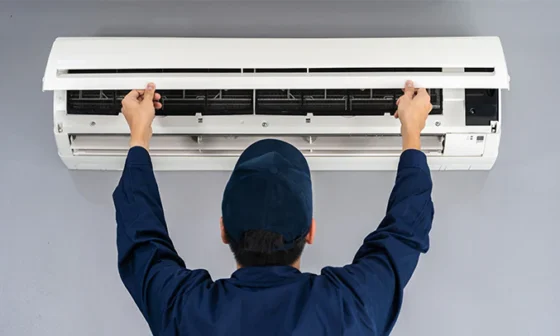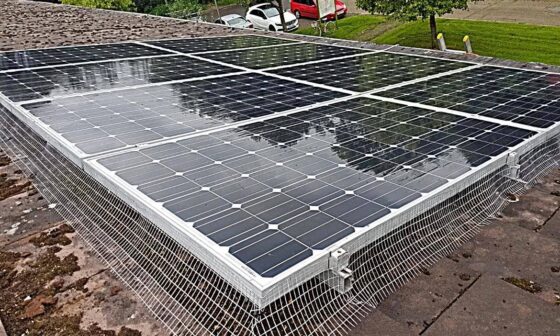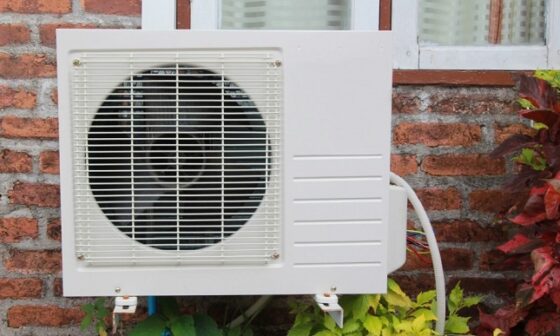
Underfloor heating (UFH) has become a popular choice for homeowners across the UK, offering a comfortable and energy-efficient method of heating rooms. Whether you’re installing it in a new build or retrofitting an existing home, underfloor heating provides even heat distribution, eliminates the need for radiators, and frees up valuable wall space.
However, while UFH is efficient by design, optimising its usage requires more than just switching it on and off. In this article, we will explore key strategies for using underfloor heating efficiently, helping you lower your energy consumption, reduce heating costs, and enjoy maximum comfort.
Understanding Your Underfloor Heating System
Before you can use underfloor heating efficiently, it’s important to understand the type of system you have. Broadly, there are two types of underfloor heating systems.
- Electric underfloor heating systems use electric heating cables or mats installed beneath the floor. These systems are often used in small rooms or retrofit projects because they are easier to install but can be more costly to run.
- Water-based underfloor heating systems consist of a network of pipes through which warm water flows, typically connected to a boiler, heat pump, or solar thermal system. These systems are more energy-efficient, especially in larger areas or new builds, but they require professional installation.
The efficiency of your system can vary depending on the setup, the type of flooring, and your heating source, so optimising each element is crucial.
Insulation is Key: Maximise Heat Retention
One of the most important factors affecting the efficiency of underfloor heating is insulation. Properly insulating both the floor and the home can greatly reduce heat loss, allowing your underfloor heating to work less while still keeping your home warm.
- Insulate beneath the floor: A well-insulated floor ensures that the heat generated by the system moves upwards into the room rather than being lost to the ground below. Installing rigid insulation boards beneath the heating system is essential, particularly if your property has a ground floor or is above an unheated space such as a garage.
- Ensure home insulation: Efficient underfloor heating also depends on overall home insulation. Double glazing for windows, wall insulation, and insulated lofts help retain the heat in the house, reducing the demand on the UFH system.
Good insulation can improve energy efficiency by up to 20%, meaning your system won’t need to work as hard to maintain a comfortable temperature.
Set the Right Temperature: Avoid Overheating
Underfloor heating systems are designed to work best at lower temperatures compared to traditional radiators. Radiators typically need to be heated to around 65-75°C to heat a room effectively, whereas underfloor heating systems usually operate efficiently between 27°C and 35°C.
- Optimal temperature settings: For most homes, keeping the thermostat set to 18-21°C will provide a comfortable environment. Heating the system higher than necessary doesn’t warm the space faster but does increase energy consumption. Remember, underfloor heating works differently to radiators, with slower heat-up times but more consistent warmth once the room reaches the desired temperature.
By avoiding overheating, not only will you save on energy bills, but you’ll also prevent damage to certain types of flooring that may be sensitive to higher temperatures.
Use Zoned Heating for Greater Control
Zoned heating allows you to divide your home into different heating zones, each controlled separately. This is an extremely efficient way to manage underfloor heating as you can heat only the rooms in use, rather than the entire house.
- Install thermostats in each room: By having individual thermostats in different zones, you can control the temperature for each space independently. This is particularly useful for rooms that have varying heating needs, such as bathrooms, kitchens, and living areas. For example, you can set the underfloor heating in the living room to be warm during the evening but turn it down in bedrooms during the day.
- Avoid heating unused areas: There’s no need to heat unoccupied spaces like spare rooms or storage areas, and by using a zoned system, you can keep these rooms at a lower temperature. This significantly improves the efficiency of your heating system by reducing the load.
Zoned heating systems can save up to 20% on energy bills by preventing unnecessary heating.
Utilise a Programmable Thermostat for Efficiency
A programmable thermostat is crucial for making your underfloor heating system more efficient. These thermostats allow you to set your heating schedule based on your daily routine, so the system can heat up just before you wake up or return home, and cool down when not in use.
- Schedule heating to match your lifestyle: Underfloor heating doesn’t heat a room as quickly as radiators, so it’s important to schedule it to turn on at least 30-60 minutes before you need warmth. Once a room reaches the desired temperature, maintaining it requires less energy than repeatedly heating it from cold.
- Smart thermostats for remote control: If you install a smart thermostat, you can control your underfloor heating remotely using your smartphone. This feature is particularly useful if your plans change, as you can turn off the heating when you’re away or boost it in advance of your arrival home.
By programming your thermostat correctly, you can avoid heating when it isn’t necessary, maximising efficiency and minimising waste.
Choose the Right Flooring Material
The type of flooring you choose can have a significant impact on how efficiently your underfloor heating system operates. Certain materials are better conductors of heat than others, meaning they can transfer warmth from the system to the room more effectively.
- Stone and tiles: Materials such as ceramic tiles, stone, and slate are the most efficient at conducting heat. These materials warm up quickly and retain heat longer, making them ideal for use with underfloor heating.
- Wood and laminate: Engineered wood and certain types of laminate are also suitable but require lower operating temperatures to avoid warping. It’s important to check that the wood or laminate is compatible with underfloor heating systems.
- Carpet: While carpet is generally less effective at conducting heat, using low-tog (below 1.5) carpets with underfloor heating is possible, though the system may take longer to heat the room.
Choosing a flooring material that allows efficient heat transfer will help improve the performance of your underfloor heating.
Maintain Your Underfloor Heating System Regularly
Regular maintenance is vital to ensure your underfloor heating system continues to operate efficiently. A poorly maintained system can become less effective over time, leading to higher energy consumption and uneven heating.
- Annual checks for water-based systems: If you have a water-based underfloor heating system, ensure the pipes, boiler, and pump are checked annually for leaks, blockages, or airlocks. These issues can reduce efficiency and increase running costs.
- Electric system checks: For electric systems, ensure the heating mats or cables are functioning properly, and check for any signs of wear or damage that could reduce efficiency.
- Bleed the system: If you notice uneven heating in different areas, it could be due to air trapped in the system. Bleeding the system will release the trapped air, ensuring the heating operates evenly and efficiently.
Proper maintenance ensures the longevity of your system and helps avoid any unnecessary energy waste.
Pair Your Underfloor Heating with Renewable Energy
To further improve efficiency and reduce your environmental impact, consider pairing your underfloor heating with renewable energy sources. Water-based systems, in particular, are well-suited to work alongside green energy sources.
- Heat pumps: Ground or air-source heat pumps can provide a sustainable source of energy for your underfloor heating system. These pumps draw heat from the air or ground and transfer it into your home at low operating temperatures, making them an ideal match for UFH systems.
- Solar panels: Solar thermal systems can also be used to heat the water in a water-based underfloor heating system, further reducing the cost of operation and making the system more eco-friendly.
Combining UFH with renewable energy can significantly reduce your reliance on fossil fuels, cutting both costs and carbon emissions.
Conclusion
Using underfloor heating efficiently comes down to smart planning, correct usage, and maintaining your system. By insulating properly, setting appropriate temperatures, using zoned heating, and scheduling with a programmable thermostat, you can enjoy a warm and comfortable home without excessive energy costs.


